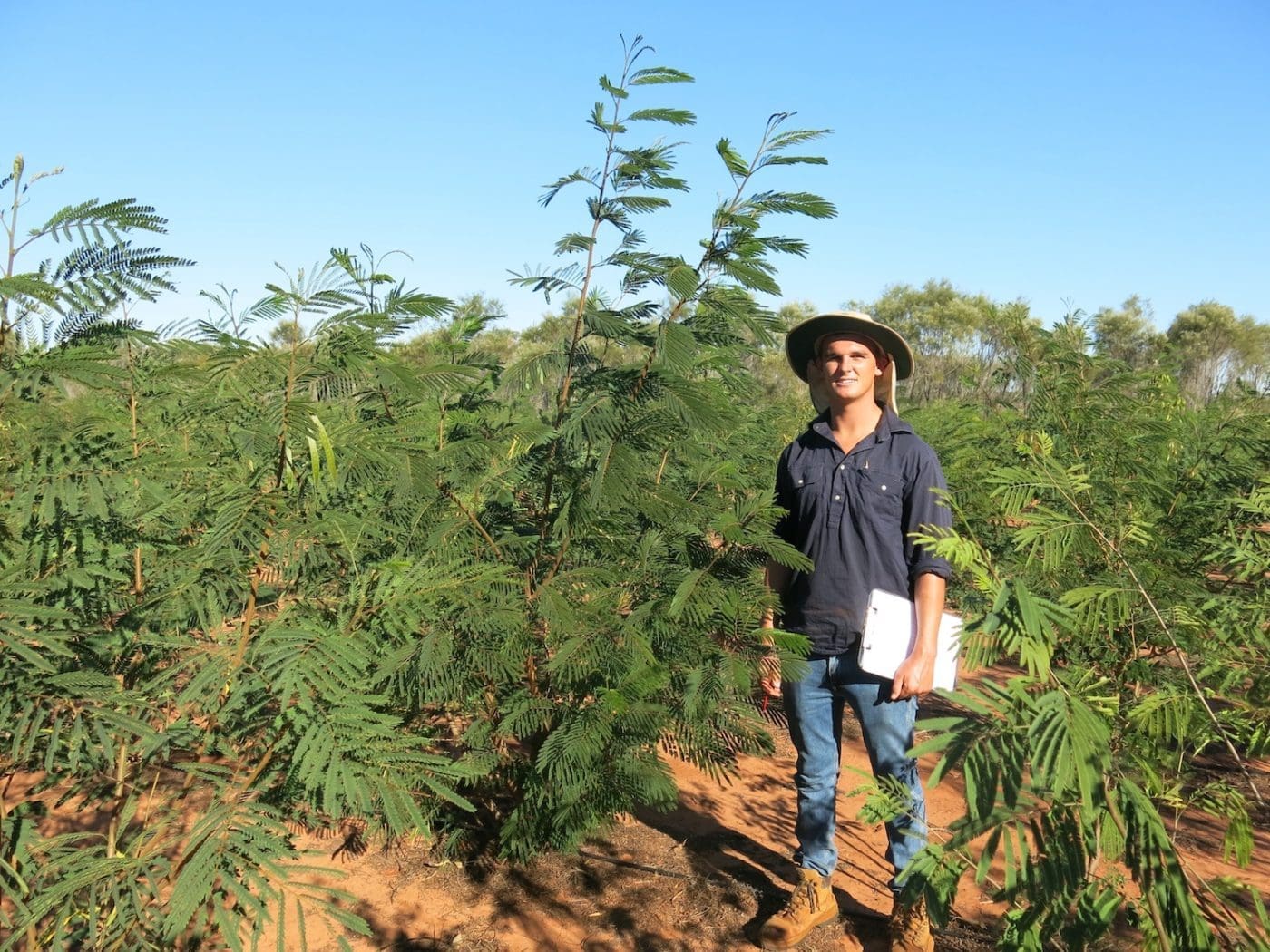
DPIRD development officer Samuel Crouch in the leucaena field nursery at Broome inspecting regrowth after cutting in July 2019.
LESSONS learned from research into the potential for mosaic agriculture in northern Western Australia were revealed at the Kimberley Pilbara Cattlemen’s Association’s Innovation Conference field day in Broome this week.
The Department of Primary Industries and Regional Development’s Mosaic Agriculture project to examine the value of irrigated crops and pastures for rangeland beef production, commenced in 2015, jointly funded by the Meat & Livestock Australia Donor Company.
Department senior research scientist Clinton Revell said a recent desktop modelling study found that while a fully integrated irrigation system that produced high quality feed was profitable, it would take time to recoup the cost of investment.
“High biomass production from the tropical and sub-tropical grasses is possible in the Pilbara and Kimberley, with a crop of hybrid sorghum near Broome, provided with adequate fertiliser and optimal irrigation, producing high growth rates of more than 250 kilograms of dry matter per hectare per day,” he said.
“However the study noted there was a trade-off between biomass production and feed quality, highlighting the importance of producing high quality feed if the investment in irrigation is to be successful.
“The study found it would take between seven and 13 years to recoup the investment in irrigation, reflecting the need to consider the initial capital cost of the development.”
Dr Revell said one of the more profitable scenarios identified in the study was to wean calves early and feed them with high quality irrigated hay, targeting an energy content of more than 9.5 megajoules per kilogram of dry matter.
“This allows the breeders to recover body condition earlier, resulting in improved conception rates and reduced mortality rates, leading to a more efficient herd structure with economic and environmental benefits,” he said.
Dr Revell said the preliminary findings gave pastoralists much to think about when making such a large investment.
“Although small-scale irrigation developments have been shown to be profitable, investment decisions should be made carefully, given the high sensitivity to feed quality, the live weight sale price of steers, hay yield and the assumed discount rate,” he said.
Further scenario analyses are planned, to include additional forage production systems, a larger herd size, cost of water and scaling up irrigation for stand and graze systems.
The field day gathering also received an update on another department project to develop a sterile leucaena plant that does not pose a weed risk to the rangelands, also jointly funded by the Meat & Livestock Australia Donor Company.
Dr Revell said a range of leucaena lines were being evaluated across northern WA, with the best material to be used in a crossing program to produce sterile hybrid varieties.
“We’ve been working in partnership with Murdoch University scientists, who’ve brought skills with molecular technologies to speed up the breeding program,” he said.
“By the end of this project we expect to have developed a feasible strategy to produce a sterile or seedless leucaena and to have begun field testing the new material.
“This should result in a new commercial variety or varieties that can be used in appropriate dryland or intensive irrigated production systems, with minimal risk of becoming an environmental weed.”
The field day was also told about the department’s weed risk nursery trials in the rangelands, which were established to obtain field data on the risk of a wide range of exotic fodder crops, pasture grasses and legumes becoming weeds of the natural environment.
Dr Revell said the trials in the west Kimberley and Pilbara had found little risk of the species with potential for use under irrigation persisting in the medium to long term without irrigation.
“While there is always more work to be done, the Mosaic Agriculture project is now in the process of disseminating the key findings to industry and government,” he said.
Source: WA Department of Primary Industries and Regional Development. For more information about the department’s mosaic agriculture research visit agric.wa.gov.au and search for ‘northern beef development mosaic agriculture’.
